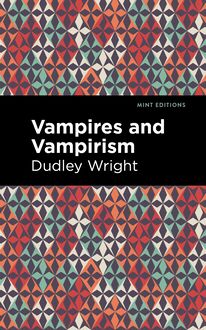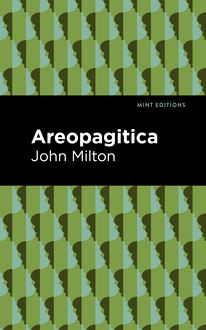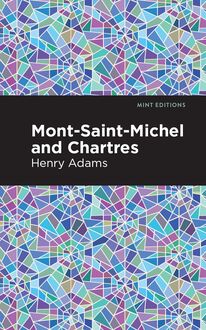-
 Univers
Univers
-
 Ebooks
Ebooks
-
 Livres audio
Livres audio
-
 Presse
Presse
-
 Podcasts
Podcasts
-
 BD
BD
-
 Documents
Documents
-
- Cours
- Révisions
- Ressources pédagogiques
- Sciences de l’éducation
- Manuels scolaires
- Langues
- Travaux de classe
- Annales de BEP
- Etudes supérieures
- Maternelle et primaire
- Fiches de lecture
- Orientation scolaire
- Méthodologie
- Corrigés de devoir
- Annales d’examens et concours
- Annales du bac
- Annales du brevet
- Rapports de stage
La lecture à portée de main
Vous pourrez modifier la taille du texte de cet ouvrage
Découvre YouScribe en t'inscrivant gratuitement
Je m'inscrisDécouvre YouScribe en t'inscrivant gratuitement
Je m'inscrisEn savoir plus
Vous pourrez modifier la taille du texte de cet ouvrage
En savoir plus

Description
Using architecture, sculpture, culture and history, Adams humanizes the medieval period and provides valuable insight on religious philosophy. Mont-Saint Michel and Chartes provides a background and description of the construction of two French landmarks built in the 11th century. The Mont-Saint Michel cathedral was built during a militant time; it was not enough to simply be steadfast in one’s own beliefs, but also to make others believe them. Religious conversion was a form of defense. Mont-Saint Michel was built in a period where faith was aggressive, almost violent, and to accommodate this, Mont-Saint Michel was built in honor of a warrior angel. In contrast, the Chartes cathedral, another French monument built in the Gothic period, was built as a shrine to Mary, the mother of God. Using Mary’s image and inspiration, this church set a welcoming tone. While the cathedral of Mont-Saint Michel represents a more aggressive side of faith, the cathedral of Chartes is the embodiment of love and peace. In the same way that this contrast exists between the two cathedrals, a similar duality is present in the Christian faith. It is both a safe haven and a weapon wielded by the religious in order to conform others to their faith. Through descriptions and comparisons between Mont-Saint Michel and Chartes, Adams provides thoughtful reflection on both Christianity and the magnificent structures of the Gothic period.
Mont-Saint Michel and Chartes by Henry Adamsis a subjective and personal view on history written in beautiful prose. With the stories behind two grand French cathedrals, Mont-Saint Michel and Chartes explore themes of Christianity, gender, and medieval culture with eloquent and enlightened discourse on history and the politics within Christianity.
Now in a modern, readable font and new, striking cover design, Mont-Saint Michel and Chartes by the prolific American author and philosopher, Henry Adams provides meaningful meditation on the duality of religion and insight on the French Gothic period.
Sujets
Informations
| Publié par | Mint Editions |
| Date de parution | 01 décembre 2020 |
| Nombre de lectures | 0 |
| EAN13 | 9781513272702 |
| Langue | English |
| Poids de l'ouvrage | 2 Mo |
Informations légales : prix de location à la page 0,0500€. Cette information est donnée uniquement à titre indicatif conformément à la législation en vigueur.
Extrait
Mont-Saint-Michel and Chartres
Henry Adams
Mont-Saint-Michel and Chartres was first published in 1904.
This edition published by Mint Editions 2020.
ISBN 9781513267708 | E-ISBN 9781513272702
Published by Mint Editions®
minteditionbooks.com
Publishing Director: Jennifer Newens
Design & Production: Rachel Lopez Metzger
Typesetting: Westchester Publishing Services
C ONTENTS P REFACE 1. S AINT M ICHIEL DE LA M ER DEL P ERIL 2. L A C HANSON DE R OLAND 3. T HE M ERVEILLE 4. N ORMANDY AND THE I LE DE F RANCE 5. T OWERS AND P ORTALS 6. T HE V IRGIN OF C HARTRES 7. R OSES AND A PSES 8. T HE T WELFTH -C ENTURY G LASS 9. T HE L EGENDARY W INDOWS 10. T HE C OURT OF THE Q UEEN OF H EAVEN 11. T HE T HREE Q UEENS 12. N ICOLETTE AND M ARION 13. L ES M IRACLES DE N OTRE D AME 14. A BELARD 15. T HE M YSTICS 16. S AINT T HOMAS A QUINAS
P REFACE
December, 1904.
S OME OLD E LIZABETHAN PLAY OR poem contains the lines:
… Who reads me, when I am ashes,
Is my son in wishes…
The relationship, between reader and writer, of son and father, may have existed in Queen Elizabeth’s time, but is much too close to be true for ours. The utmost that any writer could hope of his readers now is that they should consent to regard themselves as nephews, and even then he would expect only a more or less civil refusal from most of them. Indeed, if he had reached a certain age, he would have observed that nephews, as a social class, no longer read at all, and that there is only one familiar instance recorded of a nephew who read his uncle. The exception tends rather to support the rule, since it needed a Macaulay to produce, and two volumes to record it. Finally, the metre does not permit it. One may not say: “Who reads me, when I am ashes, is my nephew in wishes.”
The same objections do not apply to the word “niece.” The change restores the verse, and, to a very great degree, the fact. Nieces have been known to read in early youth, and in some cases may have read their uncles. The relationship, too, is convenient and easy, capable of being anything or nothing, at the will of either party, like a Mohammedan or Polynesian or American marriage. No valid objection can be offered to this choice in the verse. Niece let it be!
The following lines, then, are written for nieces, or for those who are willing, for those, to be nieces in wish. For convenience of travel in France, where hotels, in out-of-the-way places, are sometimes wanting in space as well as luxury, the nieces shall count as one only. As many more may come as like, but one niece is enough for the uncle to talk to, and one niece is much more likely than two to listen. One niece is also more likely than two to carry a kodak and take interest in it, since she has nothing else, except her uncle, to interest her, and instances occur when she takes interest neither in the uncle nor in the journey. One cannot assume, even in a niece, too emotional a nature, but one may assume a kodak.
The party, then, with such variations of detail as may suit its tastes, has sailed from New York, let us say, early in June for an entire summer in France. One pleasant June morning it has landed at Cherbourg or Havre and takes the train across Normandy to Pontorson, where, with the evening light, the tourists drive along the chaussee, over the sands or through the tide, till they stop at Madame Poulard’s famous hotel within the Gate of the Mount.
The uncle talks:
Chapter 1
S AINT M ICHIEL DE LA M ER DEL P ERIL
T he Archangel loved heights. Standing on the summit of the tower that crowned his church, wings upspread, sword uplifted, the devil crawling beneath, and the cock, symbol of eternal vigilance, perched on his mailed foot, Saint Michael held a place of his own in heaven and on earth which seems, in the eleventh century, to leave hardly room for the Virgin of the Crypt at Chartres, still less for the Beau Christ of the thirteenth century at Amiens. The Archangel stands for Church and State, and both militant. He is the conqueror of Satan, the mightiest of all created spirits, the nearest to God. His place was where the danger was greatest; therefore you find him here. For the same reason he was, while the pagan danger lasted, the patron saint of France. So the Normans, when they were converted to Christianity, put themselves under his powerful protection. So he stood for centuries on his Mount in Peril of the Sea, watching across the tremor of the immense ocean, immensi tremor oceani, as Louis XI, inspired for once to poetry, inscribed on the collar of the Order of Saint Michael which he created. So soldiers, nobles, and monarchs went on pilgrimage to his shrine; so the common people followed, and still follow, like ourselves.
The church stands high on the summit of this granite rock, and on its west front is the platform, to which the tourist ought first to climb. From the edge of this platform, the eye plunges down, two hundred and thirty-five feet, to the wide sands or the wider ocean, as the tides recede or advance, under an infinite sky, over a restless sea, which even we tourists can understand and feel without books or guides; but when we turn from the western view, and look at the church door, thirty or forty yards from the parapet where we stand, one needs to be eight centuries old to know what this mass of encrusted architecture meant to its builders, and even then one must still learn to feel it. The man who wanders into the twelfth century is lost, unless he can grow prematurely young.
One can do it, as one can play with children. Wordsworth, whose practical sense equalled his intuitive genius, carefully limited us to “a season of calm weather,” which is certainly best; but granting a fair frame of mind, one can still “have sight of that immortal sea” which brought us hither from the twelfth century; one can even travel thither and see the children sporting on the shore. Our sense is partially atrophied from disuse, but it is still alive, at least in old people, who alone, as a class, have the time to be young.
One needs only to be old enough in order to be as young as one will. From the top of this Abbey Church one looks across the bay to Avranches, and towards Coutances and the Cotentin, the Constantinus pagus, whose shore, facing us, recalls the coast of New England. The relation between the granite of one coast and that of the other may be fanciful, but the relation between the people who live on each is as hard and practical a fact as the granite itself. When one enters the church, one notes first the four great triumphal piers or columns, at the intersection of the nave and transepts, and on looking into M. Corroyer’s architectural study which is the chief source of all one’s acquaintance with the Mount, one learns that these piers were constructed in 1058. Four out of five American tourists will instantly recall the only date of mediaeval history they ever knew, the date of the Norman Conquest. Eight years after these piers were built, in 1066, Duke William of Normandy raised an army of forty thousand men in these parts, and in northern France, whom he took to England, where they mostly stayed. For a hundred and fifty years, until 1204, Normandy and England were united; the Norman peasant went freely to England with his lord, spiritual or temporal; the Norman woman, a very capable person, followed her husband or her parents; Normans held nearly all the English fiefs; filled the English Church; crowded the English Court; created the English law; and we know that French was still currently spoken in England as late as 1400, or thereabouts, “After the scole of Stratford atte bowe.” The aristocratic Norman names still survive in part, and if we look up their origin here we shall generally find them in villages so remote and insignificant that their place can hardly be found on any ordinary map; but the common people had no surnames, and cannot be traced, although for every noble whose name or blood survived in England or in Normandy, we must reckon hundreds of peasants. Since the generation which followed William to England in 1066, we can reckon twenty-eight or thirty from father to son, and, if you care to figure up the sum, you will find that you had about two hundred and fifty million arithmetical ancestors living in the middle of the eleventh century. The whole population of England and northern France may then have numbered five million, but if it were fifty it would not much affect the certainty that, if you have any English blood at all, you have also Norman. If we could go back and live again in all our two hundred and fifty million arithmetical ancestors of the eleventh century, we should find ourselves doing many surprising things, but among the rest we should pretty certainly be ploughing most of the fields of the Cotentin and Calvados; going to mass in every parish church in Normandy; rendering military service to every lord, spiritual or temporal, in all this region; and helping to build the Abbey Church at Mont-Saint-Michel. From the roof of the Cathedral of Coutances over yonder, one may look away over the hills and woods, the farms and fields of Normandy, and so familiar, so homelike are they, one can almost take oath that in this, or the other, or in all, one knew life once and has never so fully known it since.
Never so fully known it since! For we of the eleventh century, hard-headed, close-fisted, grasping, shrewd, as we were, and as Normans are still said to be, stood more fully in the centre of the world’s movement than our English descendants ever did. We were a part, and a great part, of the Church, of France, and of Europe. The Leos and Gregories of the tenth and eleventh centuries leaned on us in their great struggle for reform. Our Duke Richard-Sans-Peur, in 966, turned the old canons out of the Mount in order to bring here the highest influence of the time, the Benedictine monks of Mont
-
 Univers
Univers
-
 Ebooks
Ebooks
-
 Livres audio
Livres audio
-
 Presse
Presse
-
 Podcasts
Podcasts
-
 BD
BD
-
 Documents
Documents
-
Jeunesse
-
Littérature
-
Ressources professionnelles
-
Santé et bien-être
-
Savoirs
-
Education
-
Loisirs et hobbies
-
Art, musique et cinéma
-
Actualité et débat de société
-
Jeunesse
-
Littérature
-
Ressources professionnelles
-
Santé et bien-être
-
Savoirs
-
Education
-
Loisirs et hobbies
-
Art, musique et cinéma
-
Actualité et débat de société
-
Actualités
-
Lifestyle
-
Presse jeunesse
-
Presse professionnelle
-
Pratique
-
Presse sportive
-
Presse internationale
-
Culture & Médias
-
Action et Aventures
-
Science-fiction et Fantasy
-
Société
-
Jeunesse
-
Littérature
-
Ressources professionnelles
-
Santé et bien-être
-
Savoirs
-
Education
-
Loisirs et hobbies
-
Art, musique et cinéma
-
Actualité et débat de société
- Cours
- Révisions
- Ressources pédagogiques
- Sciences de l’éducation
- Manuels scolaires
- Langues
- Travaux de classe
- Annales de BEP
- Etudes supérieures
- Maternelle et primaire
- Fiches de lecture
- Orientation scolaire
- Méthodologie
- Corrigés de devoir
- Annales d’examens et concours
- Annales du bac
- Annales du brevet
- Rapports de stage




















